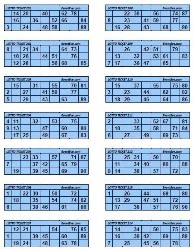


In the short story “A Pair of Tickets” by Amy Tan the setting takes place in China. The story being set in China plays a big role in how the narrator Jing –Mei develops and discovers what part of her is Chinese. Growing up in San Francisco, California she became accustomed to the American culture and their way of living. 'A Pair of Tickets' is the final story of the book. In this lesson, you will read a summary of the story, as well as an analysis of its major themes and how it functions within the novel. A Pair of Tickets Amy Tan Amy Tans A Pair Of Tickets is a story concerning family and roots. June May, like the author herself, was a Chinese born in USA and grew up with an American background culture, whereas her mother grew up in China and then immigrated to America. Preibisch 'The test of literature is, I suppose.
Two Kinds Amy Tan Pdf
You can tell by the diction Jing-mei uses that she was born in America. Although she can understand Chinese, she cannot speak it. This in itself adds to the conflict, because she is unable to relate fully to her culture because of her language barrier. Also, all the other characters in the story speak 'the Mandarin dialect from their childhood' or 'the Cantonese of their village' (862). Jing-mei uses a lot of sensory images to describe her trip in to China. One example is when she examines their hotel room, 'The rugs, drapes, bedspreads are all in shapes of taupe. There's a color television with remote control panels built into the lamp table between the two twin beds' (864). An example of symbolism that really stands out is the doll that Jing-mei's mother passed down to her youngest niece. It was the indication that her mother's whole family was dead after she saw that her parents house had been bombed during the war. Then she explains to Jeng-mei, 'She cried if that doll was not with her always. Do you see? If she was in the house with that doll, her parents were there, and so everybody was there, waiting together, because that's how our family was' (861). Another example of symbolism is the letter that the twins sent to their mother, because it's a sign of closure and also marks a new beginning for Jeng-mei. Their mother spent her whole life searching for her twins, wondering if they were alive and well and completely clueless to their fate. When the letter arrives, it was a new beginning for Jing-mei and at the same time brought closure for their mother. This letter is crucial in helping Jing-mei accept her true identity as a result of her meeting her
1. “Whatwill I say? What can I tell them about my mother? I don’t know anything. . .” The aunties are looking at me as if I had become crazy rightbefore their eyes. . . . And then it occurs to me. They are frightened.In me, they see their own daughters, just as ignorant. . . . Theysee daughters who grow impatient when their mothers talk in Chinese. . . who will bear grandchildren born without any connecting hope passedfrom generation to generation.
Tan S A Pair Of Tickets Pdf

A Pair Of Tickets Book

This quote, which is found at the endof the book’s first story, “The Joy Luck Club,” establishes someof the central themes of the novel. The passage establishes Jing-meiWoo as a representative of the book’s younger generation, the American-borndaughters who feel largely out of touch with their Chinese identitiesand with their Chinese mothers. As Jing-mei acknowledges this, shealso shows a deep sympathy with the older generation. She understandstheir fears about their daughters, their distress at the idea thattheir hopes and dreams may not survive them in these modern Americanwomen for whom so many of the old values no longer have meaning.
A Pair Of Tickets Amy Tan Full Text Pdf
However, even while Jing-mei perceives the mother-daughtergap from both sides, this double perception ultimately serves notto accentuate the gap, but to bridge it. Throughout the novel, Jing-mei providesthe connecting voice between the generations. She tells both thestory of an American-born daughter longing for independence andthe story of her mother, who fought hard to give her daughters thefreedoms that she never had. Thus, by the last chapter of the book,Jing-mei will come to represent a figure of hope for both generations,that they might understand each other better than they had thought,that they might share in a dialogue of love that often transcendslinguistic and cultural barriers.
